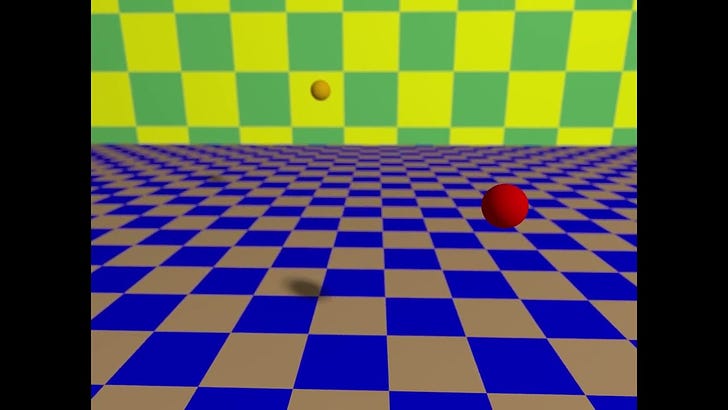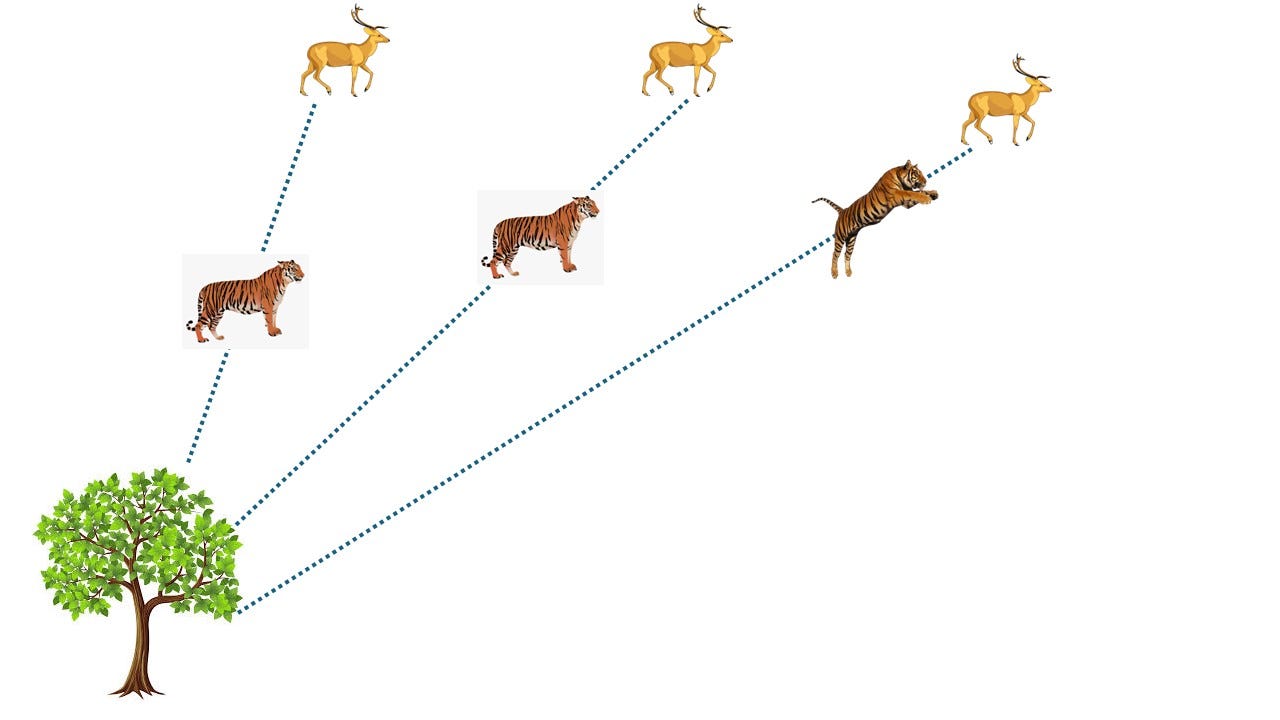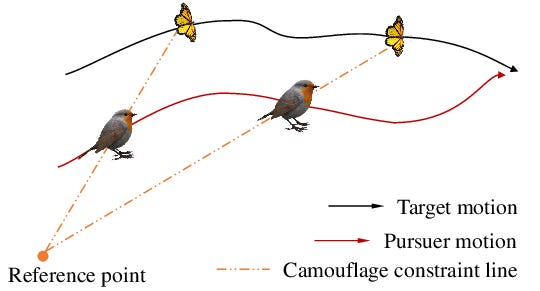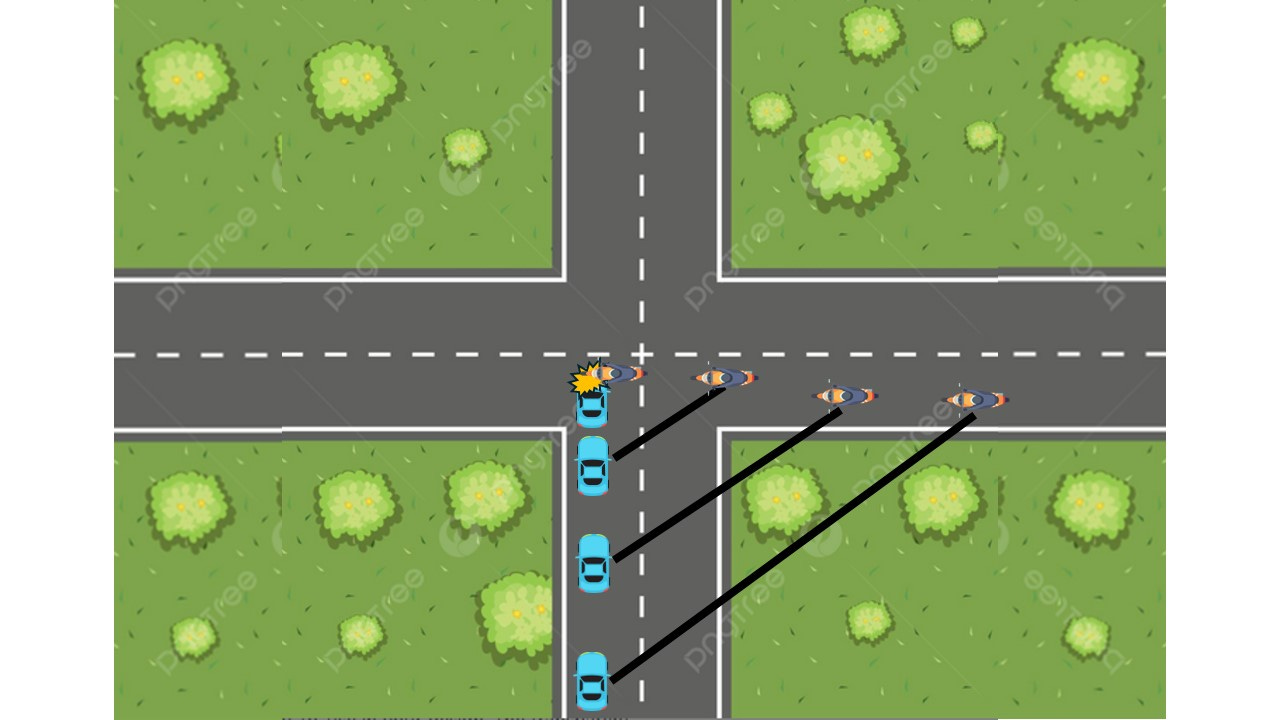Now, we had read and understood about CBDR, there is another derivative of this situation where motorcycles are involved and is called Motion Camouflage.
Introduction :
Before going to motion camouflage, human eye detects motion by the change in contrast or size or position with respect to the background. Animals use stealth techniques like blending with the color of the surroundings like a chameleon to reduce contrast or walking slowly like a cat etc to reduce the chances of detection.
Lateral movement only helps human eyes to detect objects at a distance as we cannot detect movement, if the object is far away.
For example, everyone who had looked through the window of a train or a car can recognize this phenomenon where the buildings that are very far do not appear to move but the buildings that are close appear to move.
Until the vehicles comes so close, we tend to underestimate the speed as the motion is camouflaged due to lack of lateral movement. This is one of the main reason for crashes.
This type of camouflage which is used widely by dragon flies, cheetahs, expert hunters etc is called motion camouflage. Motion camouflage is a strategy used by dragon flies,cheetahs and sometimes in robotics or military applications, where an object moves in a way that makes it appear stationary or less detectable to an observer. Instead of following a direct approach toward a target, the object moves in such a way that it maintains a constant relative position in the observer's field of vision, making it harder to perceive the approach.
In the animal kingdom, in addition to speed and strength, stealth is also essential for hunting as it helps to hunt easily without making the prey alert.
Key Concepts of Motion Camouflage:
Constant Visual Angle:
The approaching object, like a predator or another vehicle, moves in a way that its position relative to the observer doesn’t seem to change.
To the observer, the object appears to remain in the same spot, even though it’s moving closer.
Decreasing Range Without Notice:
Even though the distance between the observer and the moving object is decreasing, the lack of lateral movement (side-to-side shift) makes it hard for the observer to notice the motion until the object is very close.
The object appears "camouflaged" against the background because it blends into its previous visual position.
Let's take an example of a tiger trying to hunt a goat or a deer. If it moves laterally across the background, there's more chance of detection. However, if the tiger moves towards the deer by keeping the background constant, there's less lateral movement and less chance for deer to detect the tiger.
From the point of view of the deer,it would see the tiger as below. If the tiger was moving towards the deer without any lateral movement, the deer might not detect its presence, until its so close.
If the deer stays at the same place and the tiger takes a path keeping the background constant, the deer might not be able to detect the motion until the tiger becomes big enough in its view.
Birds, dragon flies, vultures also use the same technique to catch the prey by giving them a surprise.
So, how does it apply to driving and especially while riding a bike ?
Watch the below clip shared by Czech Police to demonstrate the motion camouflage concept.
Bikers approaching towards cars or other heavy vehicles without any lateral movement relative to a background, creates a motion camouflage situation where the drivers might not notice the bikers at all. The only evidence for the car drivers is the increase in size, which sometimes becomes too late to react as well.
This creates a crash risk at the following scenarios for bikers, cyclists etc :
1. Near intersections where the car drivers turn across the path of the bikers, only to realize that, they hadn't seen them at all.
2. A biker approaching an intersection perpendicularly and is blinded by the A pillar of the car in a CBDR situation. Here, the movement of the biker is undetected until the biker reaches so close and a crash is inevitable.
3. A biker approaching head-on and without any lateral movement, his movement is undetected.
Without any lateral movement, bikers remain undetected on highways where the bikers occupy a small portion of the huge landscape. Only when the bike is so close, car drivers start detecting them and by that time, it might be too late as well. Lack of lateral movement gives the bikers an illusion of staying still and it gets difficult to judge the speed as well,until they are so close where a CBDR situation becomes unavoidable.
It is very important for bikers to understand this phenomenon and also very useful for car drivers to know about what could possibly go wrong.
This is the reason for many intersection crashes where car drivers suddenly change lanes across the bikers either coming from the front or behind only to find a speeding biker crashing against the car or on the sides.
How do bikers reduce the risk of being camouflaged?
1. Change lane position slight as you ride, instead of riding on a straight line
2. Make subtle movements of the upper body to make yourself visible
3. Slowdown near intersections where car drivers are more vulnerable
To conclude, As a responsible bikers, bikers must try to make them more visible instead of getting camouflaged. Bikers can wear high visible jackets etc but if they're getting themselves camouflaged, they invite crash risk.
Also, at the same time, car drivers must try to understand the vulnerability of the human perception and stay alert at areas of high crash risk.









